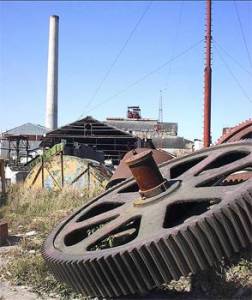Foreign Investment Returns to Cuban Agriculture

HAVANA TIMES — In Cuba’s next sugarcane harvest, the Brazilian company Odebrecht will administer a refinery in Cienfuegos province, making that company the first foreign one to participate in the island’s agribusiness since 1959, when the formerly US-controlled mills were nationalized.
Brazilian investments are growing rapidly thanks to a line of credit from the South American country of “about one billion dollars, including credits for the rebuilding of the port of Mariel and various purchases, maybe a little more,” explained Jose Felicio, Brazil’s ambassador to Cuba.
The sugar industry had been the engine of the Cuban economy since colonial times; however this sector plummeted with the economic crisis of the 1990s; it went from producing about 7 million tons in the 1980s to 1.38 million tons of sugar last year.
In an attempt to revitalize the industry, the government made one of its most recognized generals the head of the ministry and then transformed that ministry into a “business group.” Still, nothing has enabled the sugar industry to reach even its very modest annual goals.
Then came more

Having authorized Odebrecht to invest in and manage a refinery is an example of the priority given by the Cuban government to relations with Brazil, which is also currently undertaking the largest construction project in the country, the port of Mariel, for about $800 million USD.
According to Ambassador Felicio, Brazil’s regional strategy is to exploit its economic bonanza to boost the entire region, given that it will not be able to grow with poor neighbors on its margin “because what will happen is that poverty will relocate.”
He adds that Cuba is thinking about producing electricity from the sugarcane, noting, “We have experiences, our plants are efficient and perhaps we can provide loans for importing Brazilian turbine boilers and engines to produce electricity.”
The contract for managing the “September 5 Sugar Mill” will be for 13 years. Presently three other foreign companies are negotiating similar agreements, despite US laws that sanction those who invest in properties that were nationalized.
From the locomotive to the caboose

The possibility of foreign investment in agriculture was often toyed with, but no concrete steps were ever taken. This fact that it was entirely in Cuban hands was looked upon as a symbol of national sovereignty.
Another problem facing the country’s political leadership was that many foreign investors wanted to produce sugar for biofuels, an action that was publicly and vigorously opposed by former president Fidel Castro.
The authorities finally chose to push agribusiness to one side, cutting it in half. Seventy plants were paralyzed and thousands of workers reassigned to other jobs. This was a social tsunami that turned the areas surrounding the mills into ghost towns.
Then it was said that in the fields that had been used for producing sugarcane, farms were created to produce food (for domestic consumption), but the truth is that what was “harvested” was Marabou, a thorny weed that invaded half of the total arable land in the country.
Politics and sugar
During the first half of the 20th century, the US purchased a sugar quota from Cuba at preferential prices, something that allowed it to maintain a stable and profitable level of sales. However that ended with the triumph of the revolution.

Agrarian land reform nationalized the sugar mills and the land owned by US companies. Washington responded by eliminating its “quota” and stopped buying sugar from Cuba – a blow that ordinarily would have been devastating to the Cuban economy.
At that point, the entry of the Soviet Union into the game was decisive as it bought the entire national production of sugar from Cuba and at even better prices than those offered by the US. This was how both agribusiness and the young revolution survived.
The demise of the USSR engendered the sugar industry crisis, which in those days was faced by market prices that were below production costs. That was when Fidel Castro’s government decided to close half of the 150 mills that existed in the country.
—–
(*) Read Fernando Ravsberg’s blog (in Spanish)

So what we have here is an established Brazilian corporate entity well-grounded in everything socialists love to hate about capitalism being heralded as a savior of the Cuban sugar industry. On top of all that, an avowed enemy of capitalism is the first comment to applaud the article. Ya gotta`love the irony!
Better be careful with Odebrecht. Still improving South-South relationships is a good thing nonetheless.
Fernando Ravsberg’s articles, like this one, are excellent. Thanks, HT!